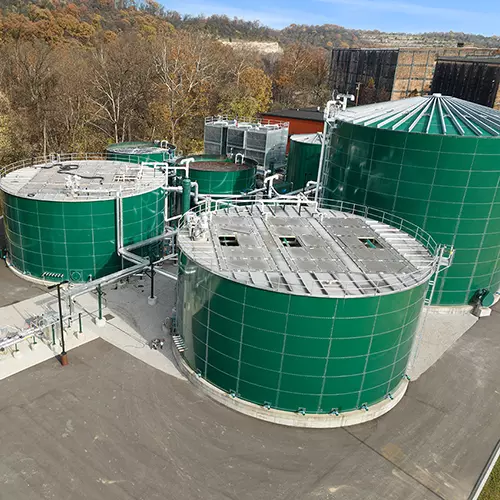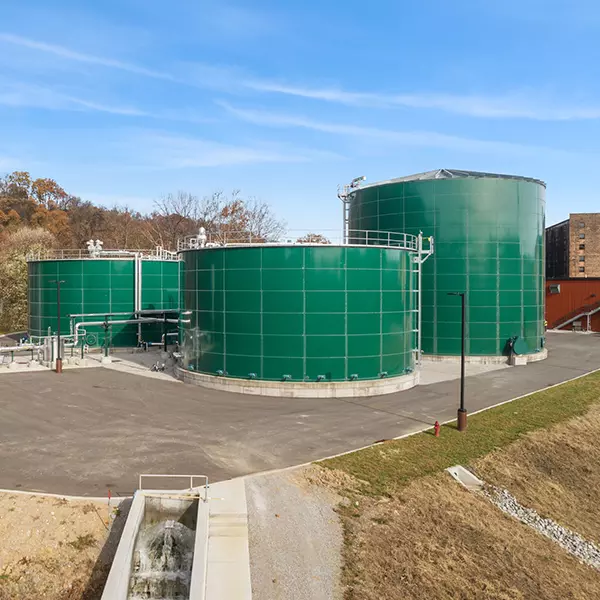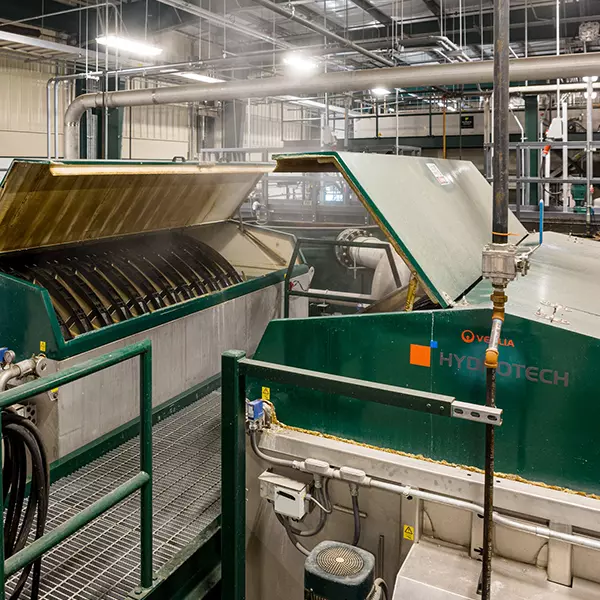The Challenge
Buffalo Trace, a renowned distillery, initiated an ambitious $1.2 billion expansion project aimed at doubling its production and bottling capacity. However, this growth presented a significant challenge: the existing wastewater treatment facility was inadequate to handle the increased loads and flows that would result from the expanded operations across various stages of the distilling process.
Recognizing the need for a comprehensive solution, the distillery set out to find a cost-effective and future-proof wastewater treatment system. The ideal solution would need to efficiently manage effluent from the diverse operations within the facility, including distilling, dry house, and bottling processes. Moreover, Buffalo Trace prioritized a system design that offered flexible operation and built-in redundancy, ensuring minimal downtime and maximum efficiency. This forward-thinking approach would not only address their current needs but also accommodate future growth and potential regulatory changes in the industry.
The Solution
Veolia Water Technologies engineered and procured an advanced wastewater system to treat up to 1.2 million gallons of wastewater from the distillery per day. The system is also designed with redundancy to allow for flexible operation and prevent downtime.
The distillery wastewater undergoes screening, cooling, equalization, chemical addition, anaerobic and aerobic biological treatment using reactors. Solids are removed via dissolved air flotation and dewatered. The treated water is filtered, disinfected with UV, aerated, and discharged into the Kentucky River.
Process Description
Wastewater from the distillery is screened to remove solids and cooled for biological treatment. It enters the EQ tank, then the Rapid Mix Tank where chemicals are added and pH controlled. The water is pumped to Veolia's Biothane® UASB (Upflow Anaerobic Sludge Blanket) reactor where organic materials are treated with anaerobic biomass, producing biogas.
It then enters Veolia's AnoxKaldnes® MBBR (Moving Bed Biofilm Reactor) process using plastic media colonized by aerobic biomass. Air blowers provide oxygen for further organic matter and ammonia treatment.
After biological treatment, Dissolved Air Flotation units separate suspended solids as float, which is skimmed off and dewatered using centrifuges. The wastewater goes through Hydrotech Discfilters for TSS (total suspended solids) polishing, followed by UV Disinfection.
Finally, an aeration ladder increases dissolved oxygen before discharge to the Kentucky River.
The Results
Upon completion, the wastewater treatment facility enabled Buffalo Trace to meet all regulatory and environmental standards. Additionally, the robust technologies and advanced process accommodate future growth and operational stability as the site increases its wastewater flows and pollutant loads.
Key Project Drivers
- Accommodate increased wastewater volumes and loads
- Cost-effectively treat wastewater from the site’s distilling, dry house, and bottling operations
- Protect the environment by treating the wastewater to a quality level to be safely discharged to the environment
Designed for flexible operation and redundancy to prevent downtime






